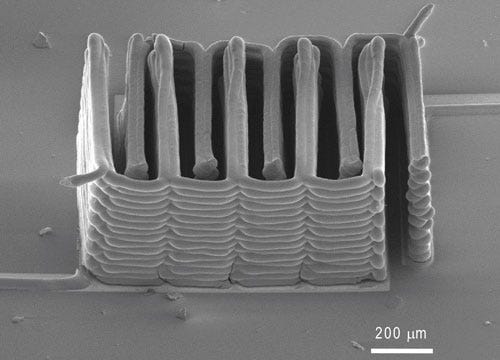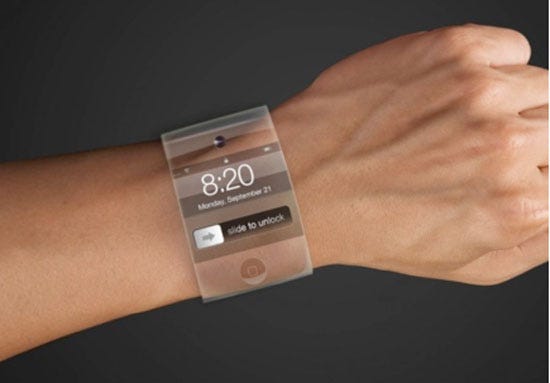February 5, 2014
Batteries appear to be all the rage in Silicon Valley, with innovators taking note that many batteries still rely on a 20th century lithium-ion cocktail that has only improved incrementally over the decades.
While microprocessors have exponentially improved under Moore's Law, batteries have not increased in capabilities substantially, says Mir Imran, a medical device pioneer and venture capitalist who is CEO of San Jose, CA-based InCube Labs. "I'm always looking for new battery technologies," Imran says.
The New York Times recently noted this trend, as well as the hurdles that come along with it:
"The problem, in part, is that it is hard to ensure the safety of many new power technologies. A faulty battery could potentially turn into a miniature bomb. So the products require exhaustive testing by regulators before hitting store shelves. Even if a new power system is approved, it often requires adoption by reputable brands like Apple, Samsung or Microsoft before everyday consumers start to trust it."
There are some major research breakthroughs, however, that are worth taking note of--improvements that could enable a whole host of new medical devices. Here are three ways batteries are improving:
Making them edible
|
Carnegie Mellon researchers found that naturally occurring melanins derived from cuttlefish ink exhibit higher charge storage capacity compared to other synthetic melanin derivatives when used as anode materials. (Art provided by Carnegie Mellon University.) |
Imran has InCube engaging in its own research in the area. There has been plenty of interest in ingestible medical devices that might release medications in a systematic way or use cameras to scope out the digestive tract. A usable edible battery would allow for such devices to simply break up in the digestive tract, and whatever came out the other end would be environmentally friendly.
Carnegie Mellon University's Chris Bettinger and Jay Whitacre have latched onto cuttlefish ink as a possibility. The two researchers had already reported some success creating edible power sources using materials found in a daily diet. But they still needed to find the optimal pigment-based anodes to include in their edible sodium-ion batteries. They ended up finding out that naturally occurring melanins derived from cuttlefish ink exhibit higher charge storage capacity compared to other synthetic melanin derivatives when used as anode materials.
Making them tinier
|
Researchers used 3-D printing to create an interlaced stack of electrodes layer by layer, producing the working anode and cathode of a microbattery. (Image courtesy of Harvard University, Jennifer Lewis) |
Researchers based at Harvard University and the University of Illinois at Urbana-Champaign have figured out how to 3-D print microbatteries only 1 mm in width. Tiny batteries are revolutionary because this is about producing the electronic guts of what goes into a medical device. The tinier the battery, the tinier the device.
A research team led by Harvard engineering professor Jennifer Lewis have created and tested materials, or "inks," able to function as electrochemically active materials. The materials had to harden into layers in just the right way so they could be stacked up in layers during the 3-D printing--creating working anodes and cathodes. The researchers say their tiny batteries have electrochemical performance is comparable to commercial batteries in terms of charge and discharge rate.
Besides tiny, flexible is another option. Researchers at Northwestern University and the University of Illinois have been working on flexible batteries that would be compatible with stretchable electronics. The batteries could be used inside of or on the body to power a variety of medical devices. The batteries can be stretched up to 300 percent of their original size and be recharged wirelessly.
Charging them through the air
|
iWatch concept (image courtesy of slashgear.com) |
A team of physicists at the Massachusetts Institute of Technology in 2007 came up with a scheme for manipulating magnetic fields in order to transfer energy over a distance, and even through body tissue to a medical device.
Medical device designers have already latched onto the technology as they work on next-generation pacemakers and left ventricular assist devices, because it would be a huge improvement to avoid running wires through the skin or operating to change a battery.
Learn about cutting-edge medtech technologies and trends at MD&M West, which is held February 10-13 in Anaheim, CA. |
Wireless battery charging technology appears to be improving even more.
The New York Times reports that Apple is actually testing using magnetic induction to charge its iWatch under development: "A similar technology is already used in some Nokia smartphones -- when a phone is placed on a charging plate, an electrical current creates a magnetic field, which creates voltage that powers the phone."
According to MacRumours, the iWatch could recharge its "rumored 100mAh battery [...] from up to a meter away."
Chris Newmarker is senior editor of MPMN and Qmed. Follow him on Twitter at @newmarker and Google+.
About the Author(s)
You May Also Like





